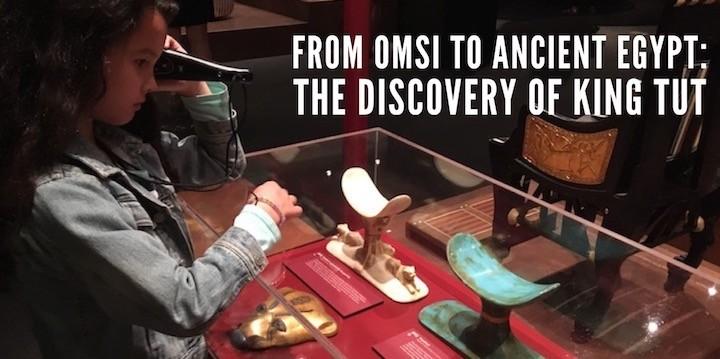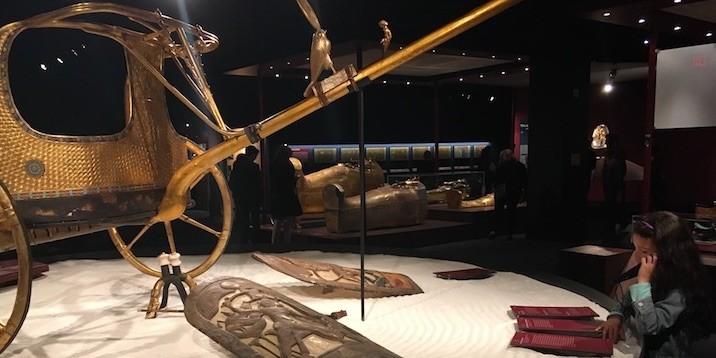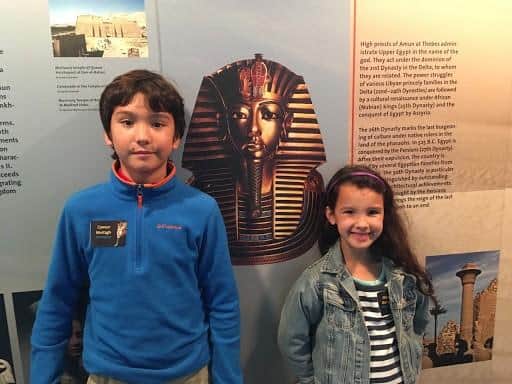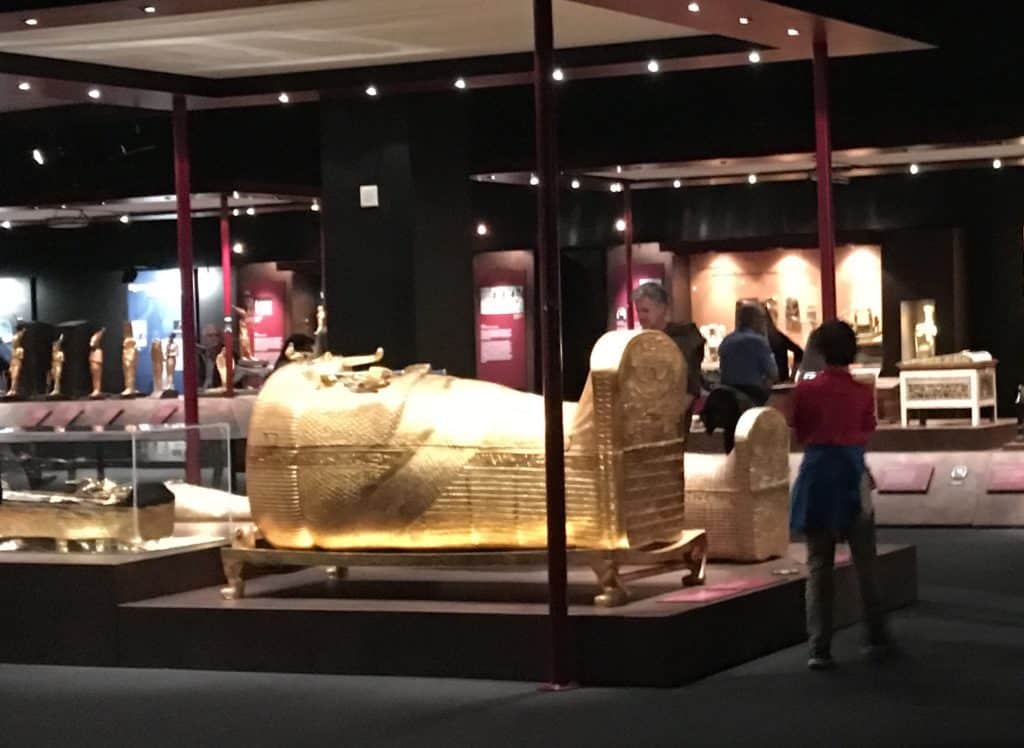
It’s autumn, and the rain is back, which means it’s time to find indoor fun. OMSI is a perennial favorite for people of all ages. This season, the science museum gives you a larger-than-life reason to visit: “The Discovery of King Tut.”
My kids haven’t been exposed to much ancient history yet, my husband has fond memories of seeing a King Tut exhibit at the Met decades ago (and a fun story about a family friend getting a tour of the actual tomb by archaeologist Howard Carter himself), and I hadn’t heard names like “Tutankhamun,” “Nefertiti,” and “Annubis” in forever, so it was time for a family trip to OMSI and then on to Egypt, circa 1300 BCE and 1922.

A heads-up: The pieces in this exhibit are not the real deal but painstakingly detailed replicas by Egyptian artists. This show, which includes more than 1,000 scientifically reproduced artifacts, is the next best thing to seeing the actual items in Egypt, since the artifacts rarely leave the country, if ever. (Note: In this article, any mention of the artifacts refers to the replicas.)

In the hall outside the actual exhibit, there’s plenty to look at and read about, plus a short video about the history of the boy pharaoh and his family. An audio guide, which is available in both adult and children’s versions, is included in admission and seems essential to the first part of the exhibit, where visitors see and learn about the three tomb chambers just as they were when Carter and his team found them. (This follows a fascinating eight-minute film about the archaeologist, his drive and determination, and the incredible story of the discovery of the tomb.) The audio guide is especially great for kids, who might not have the ability or patience to read all the information in the exhibit.
The next part leads visitors through the large gilded shrine and three additional shrines, plus the stone sarcophagus, which held three inner coffins. It’s mind-numbing to think about all the work it took to honor the young pharaoh in this manner. As my seven-year-old daughter put it, “Where did they get all the gold?”

The final part upstairs displays ornate objects among the burial treasure—jewelry, games, weapons, everyday domestic tools, and more gold—plus replicas of Tutankhamun’s famous funeral mask and mummy. This is where we spent the most time. My 10-year-old was quite fascinated with it all, and my daughter was more interested than I thought she’d be. They’re probably at the right starting age to appreciate the show. They both got a lot out of the audio tour, which really emphasizes what this discovery and excavation means and what it entailed, especially when it was done in a time without technological aids and conveniences. It might be more difficult for younger visitors to stay engaged, but a scavenger hunt with riddles gives them another way to explore.
“The Discovery of King Tut” runs through January 27. Admission is $15–$22 for nonmembers (which includes OMSI admission) and $5–$8 for members. Entry is by timed tickets, and the last entry is 1 hour before OMSI’s 5:30 closing time. Allow for enough time to park, purchase tickets (unless you ordered them online or over the phone), and join the exhibit line 10 minutes before your scheduled entry. Plan for at least an hour to take it all in. Visit omsi.edu/kingtut for more information.
- OCT’s Young Professionals Company Breathes Vivid Life into a Haunting Tale - April 14, 2024
- Why Portland Public Schools is Redrawing School Boundaries - November 8, 2022
- “Frozen”: The Ideal First Broadway Show for Young Theatergoers - March 17, 2020





